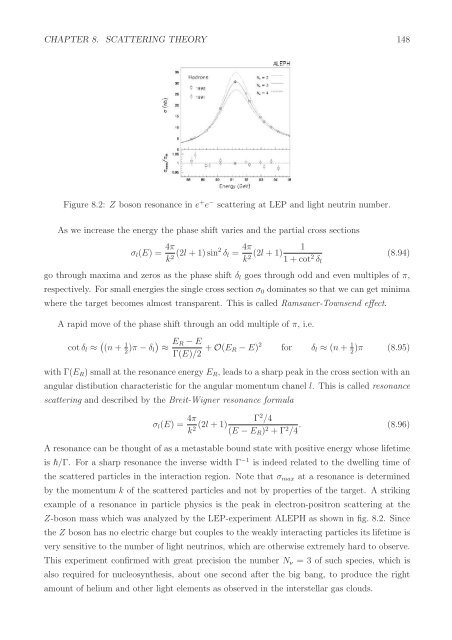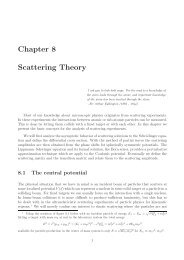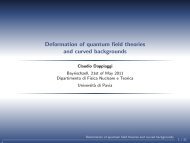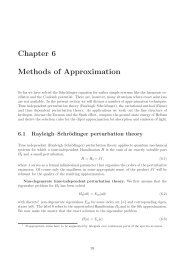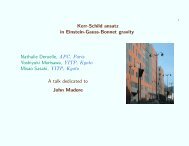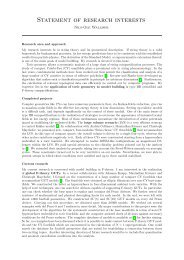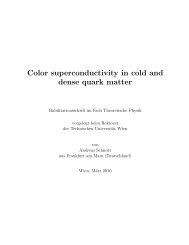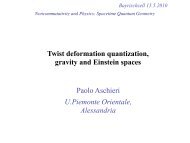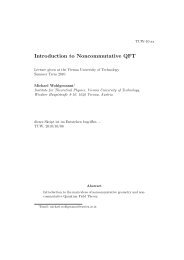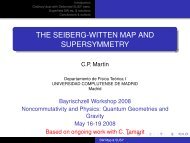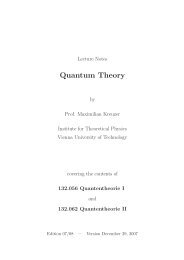Chapter 8 Scattering Theory - Particle Physics Group
Chapter 8 Scattering Theory - Particle Physics Group
Chapter 8 Scattering Theory - Particle Physics Group
You also want an ePaper? Increase the reach of your titles
YUMPU automatically turns print PDFs into web optimized ePapers that Google loves.
CHAPTER 8. SCATTERING THEORY 148<br />
Figure 8.2: Z boson resonance in e + e − scattering at LEP and light neutrin number.<br />
As we increase the energy the phase shift varies and the partial cross sections<br />
σ l (E) = 4π<br />
k 2 (2l + 1) sin2 δ l = 4π<br />
k 2 (2l + 1) 1<br />
1 + cot 2 δ l<br />
(8.94)<br />
go through maxima and zeros as the phase shift δ l goes through odd and even multiples of π,<br />
respectively. For small energies the single cross section σ 0 dominates so that we can get minima<br />
where the target becomes almost transparent. This is called Ramsauer-Townsend effect.<br />
A rapid move of the phase shift through an odd multiple of π, i.e.<br />
cot δ l ≈ ( (n + 1)π − δ ) E R − E<br />
2 l ≈<br />
Γ(E)/2 + O(E R − E) 2 for δ l ≈ (n + 1 )π (8.95)<br />
2<br />
with Γ(E R ) small at the resonance energy E R , leads to a sharp peak in the cross section with an<br />
angular distibution characteristic for the angular momentum chanel l. This is called resonance<br />
scattering and described by the Breit-Wigner resonance formula<br />
σ l (E) = 4π<br />
k 2 (2l + 1) Γ 2 /4<br />
(E − E R ) 2 + Γ 2 /4 . (8.96)<br />
A resonance can be thought of as a metastable bound state with positive energy whose lifetime<br />
is /Γ. For a sharp resonance the inverse width Γ −1 is indeed related to the dwelling time of<br />
the scattered particles in the interaction region. Note that σ max at a resonance is determined<br />
by the momentum k of the scattered particles and not by properties of the target. A striking<br />
example of a resonance in particle physics is the peak in electron-positron scattering at the<br />
Z-boson mass which was analyzed by the LEP-experiment ALEPH as shown in fig. 8.2. Since<br />
the Z boson has no electric charge but couples to the weakly interacting particles its lifetime is<br />
very sensitive to the number of light neutrinos, which are otherwise extremely hard to observe.<br />
This experiment confirmed with great precision the number N ν = 3 of such species, which is<br />
also required for nucleosynthesis, about one second after the big bang, to produce the right<br />
amount of helium and other light elements as observed in the interstellar gas clouds.


